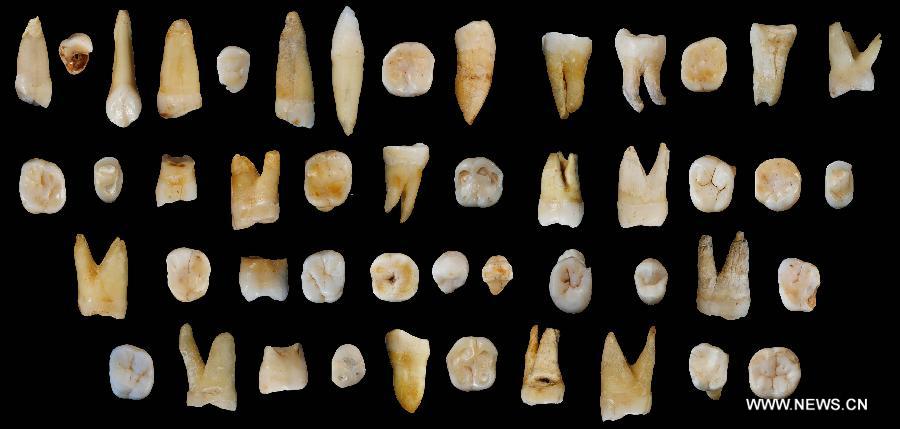
Photo provided by the Institute of Vertebrate Paleontology and Paleoanthropology under the Chinese Academy of Sciences shows tooth fossils found in Daoxian county in central China's Hunan Province. These tooth fossils indicate the early form of modern homo sapiens appeared in the region more than 80,000 years ago. The 47 fossils, found in Daoxian county, date back from 80,000 to 120,000 years and are believed to be the oldest remains of a completely modern form scientists have known in the east Asia region, the study's leading scientists said on Oct. 15, 2015.
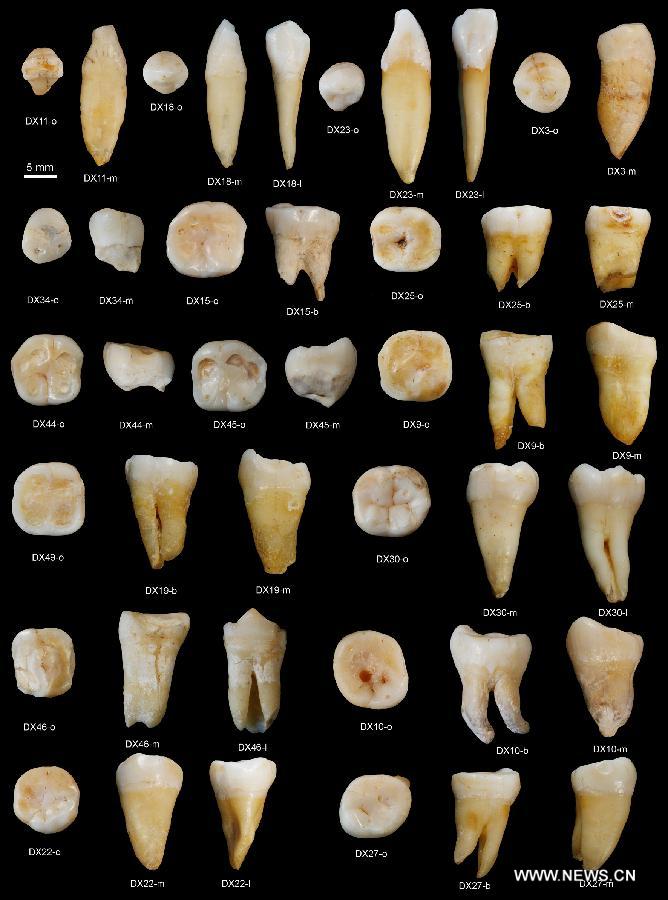
Photo provided by the Institute of Vertebrate Paleontology and Paleoanthropology under the Chinese Academy of Sciences shows tooth fossils found in Daoxian county in central China's Hunan Province. These tooth fossils indicate the early form of modern homo sapiens appeared in the region more than 80,000 years ago. The 47 fossils, found in Daoxian county, date back from 80,000 to 120,000 years and are believed to be the oldest remains of a completely modern form scientists have known in the east Asia region, the study's leading scientists said on Oct. 15, 2015.
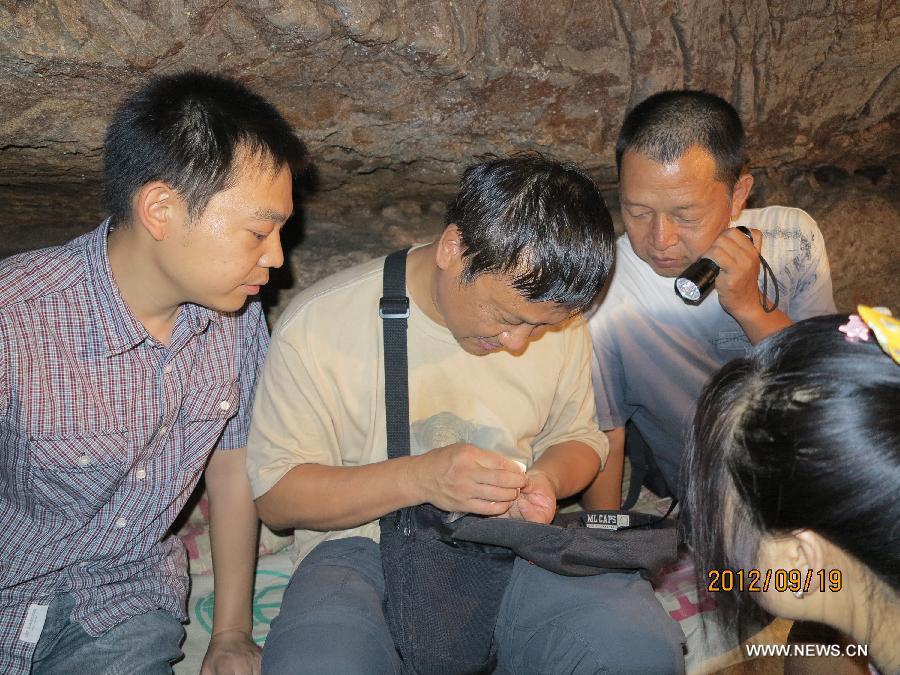
Liu Wu (C), researcher of the Institute of Vertebrate Paleontology and Paleoanthropology under the Chinese Academy of Sciences (CAS), identifies a tooth fossil, on Sept. 19, 2012. Tooth fossils found in a county in central China's Hunan Province indicate the early form of modern homo sapiens appeared in the region more than 80,000 years ago. The 47 fossils, found in Daoxian county, date back from 80,000 to 120,000 years and are believed to be the oldest remains of a completely modern form scientists have known in the east Asia region, the study's leading scientists said on Oct. 15, 2015.
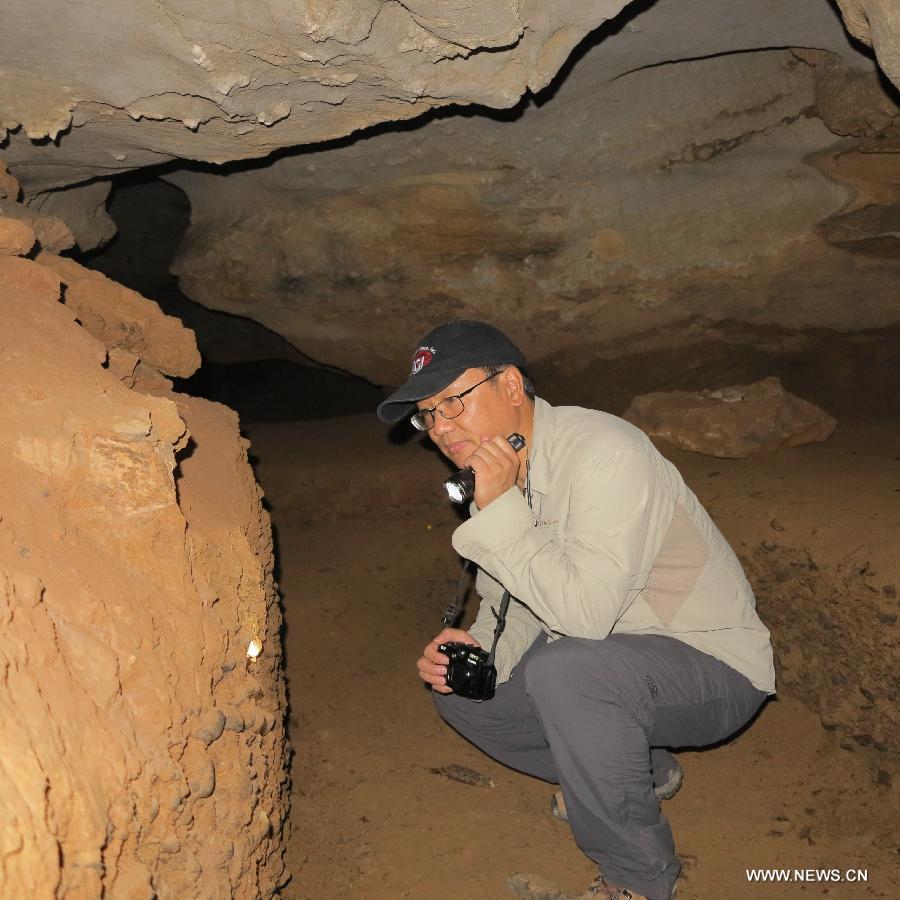
Liu Wu, researcher of the Institute of Vertebrate Paleontology and Paleoanthropology under the Chinese Academy of Sciences (CAS), identifies a tooth fossil, on Sept. 19, 2012. Tooth fossils found in a county in central China's Hunan Province indicate the early form of modern homo sapiens appeared in the region more than 80,000 years ago. The 47 fossils, found in Daoxian county, date back from 80,000 to 120,000 years and are believed to be the oldest remains of a completely modern form scientists have known in the east Asia region, the study's leading scientists said on Oct. 15, 2015.
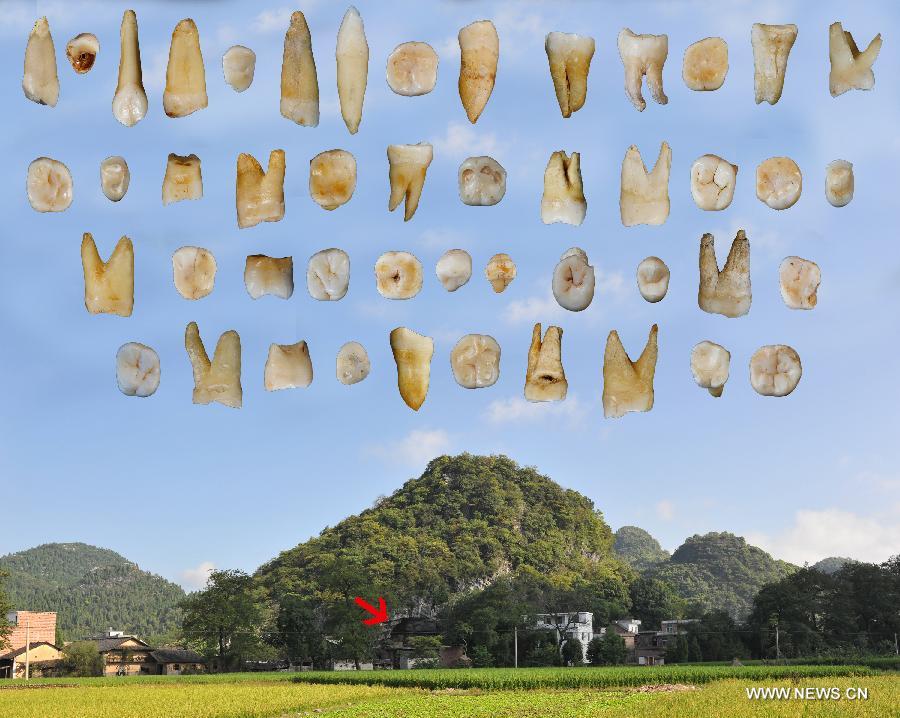
This composite graph provided by the Institute of Vertebrate Paleontology and Paleoanthropology under the Chinese Academy of Sciences shows tooth fossils found in Daoxian County in central China's Hunan Province. These tooth fossils indicate the early form of modern homo sapiens appeared in the region more than 80,000 years ago. The 47 fossils, found in Daoxian county, date back from 80,000 to 120,000 years and are believed to be the oldest remains of a completely modern form scientists have known in the east Asia region, the study's leading scientists said on Oct. 15, 2015.
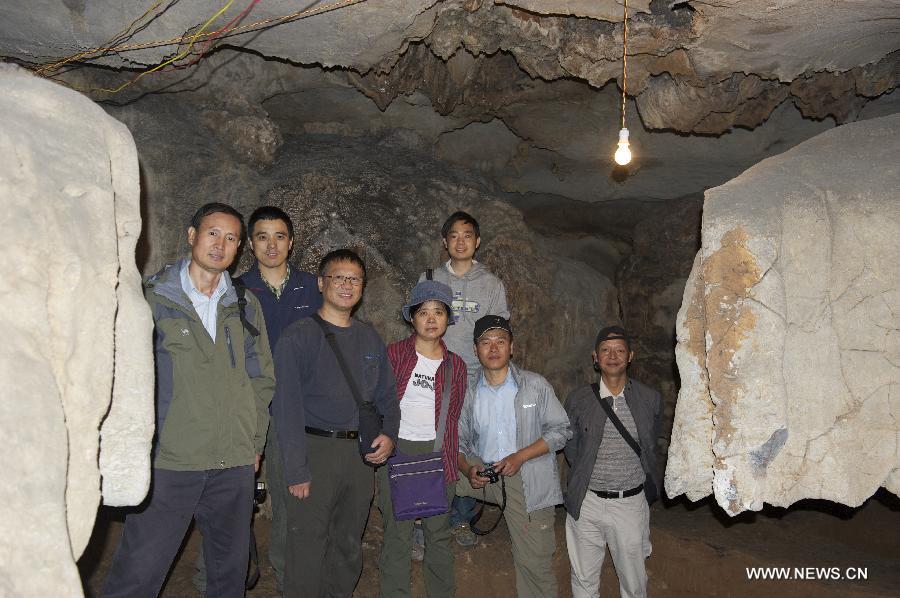
Researchers pose for a photo in a cave at Daoxian County in central China's Hunan Province, on Oct. 16, 2011. Tooth fossils found Daoxian indicate the early form of modern homo sapiens appeared in the region more than 80,000 years ago. The 47 fossils date back from 80,000 to 120,000 years and are believed to be the oldest remains of a completely modern form scientists have known in the east Asia region, the study's leading scientists said on Oct. 15, 2015.





